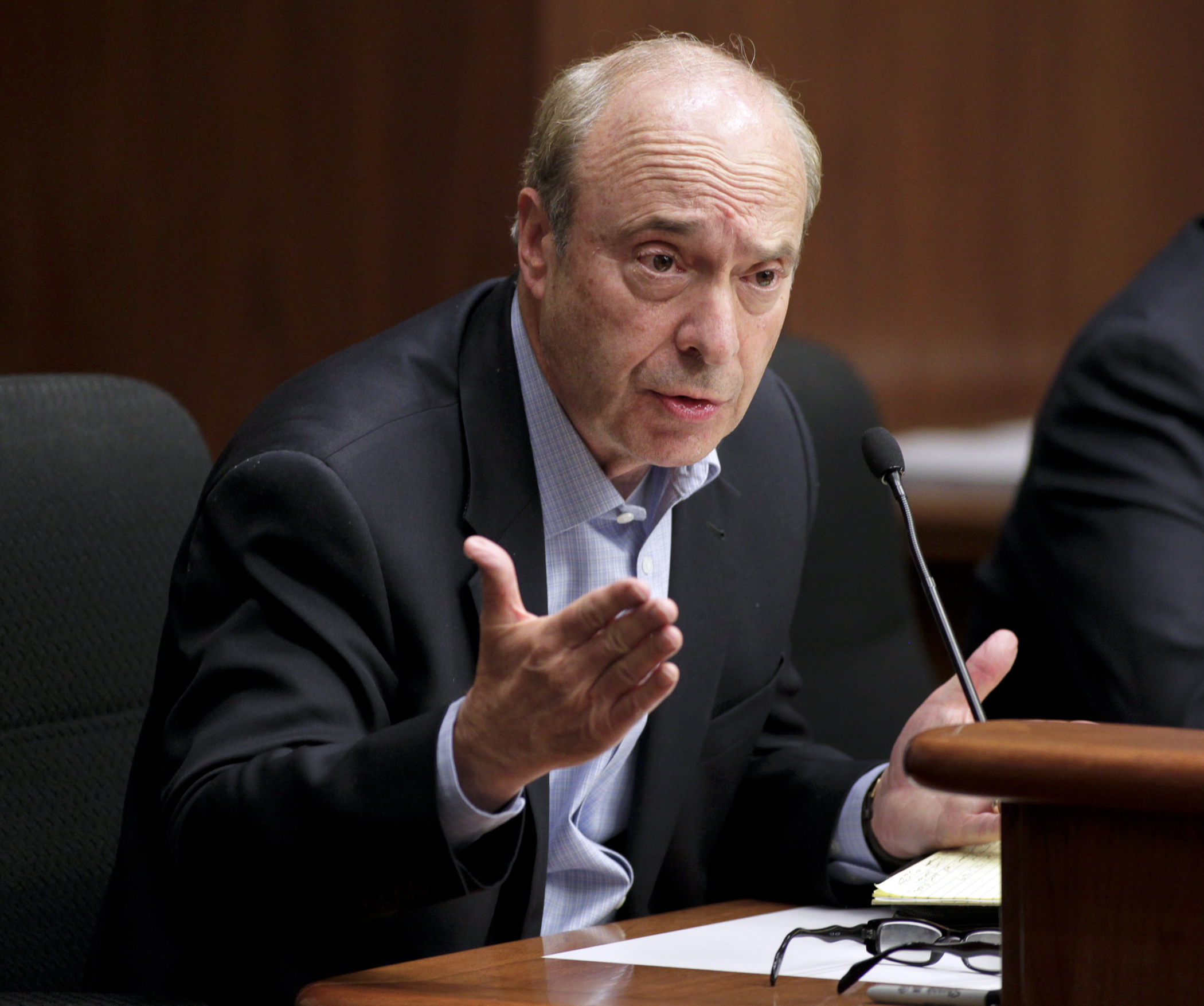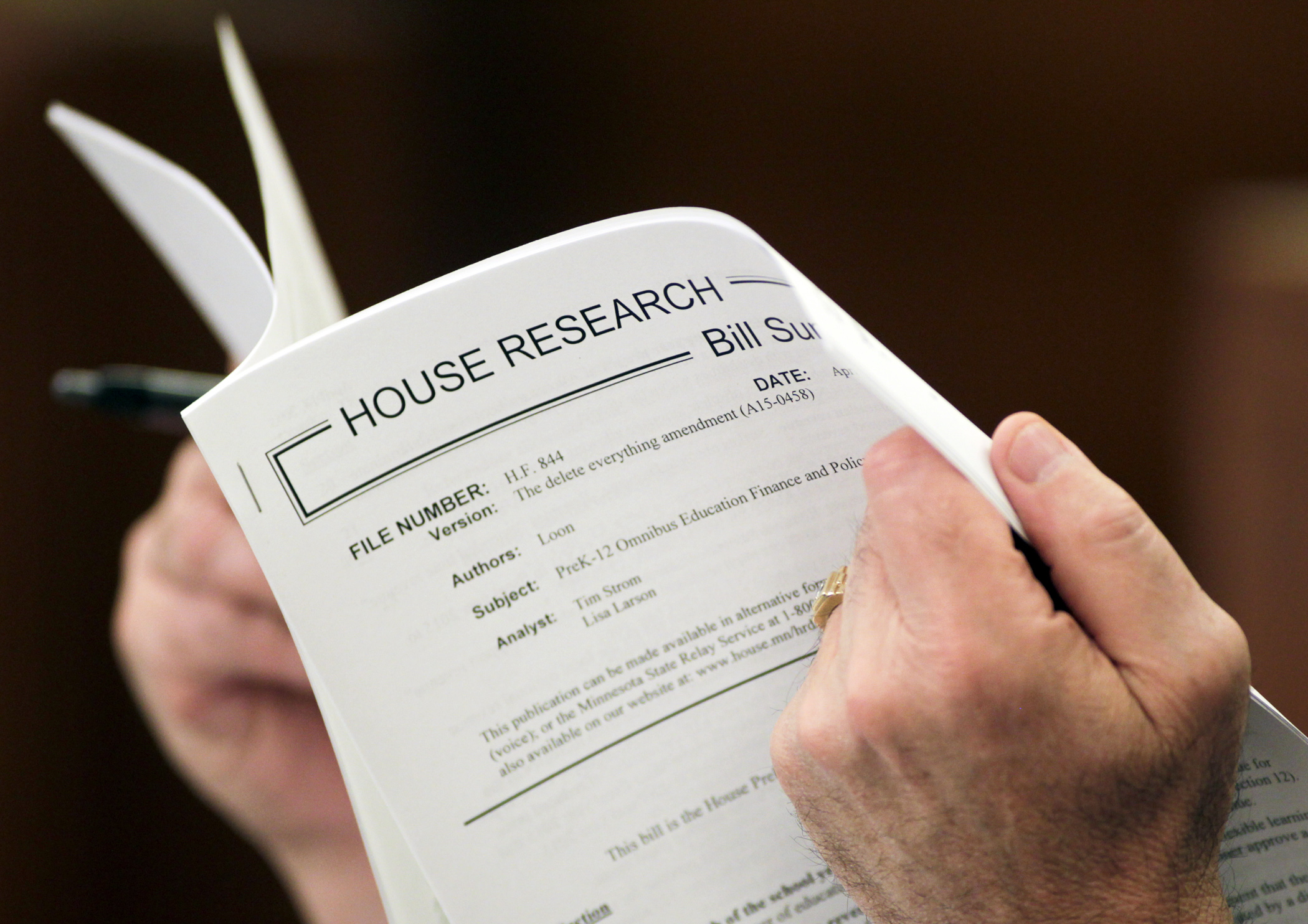Testifiers, legislators begin critique of House omnibus education bill

An omnibus education bill would increase state spending in E-12 by nearly $157 million over the next biennium (for a general fund budget of $16.86 billion) with a 0.6 percent increase to the basic funding formula – which would amount to a $157 increase per student.
The proposal falls well below the Senate target ($350 million in increased spending) and Gov. Mark Dayton’s recommended $695 million increase.
Unveiled Tuesday, the House Education Finance Committee took testimony Wednesday. Committee members are expected to offer amendments and vote on the bill Thursday. Rep. Jenifer Loon (R-Eden Prairie), the committee chair, sponsors the bill.
Several testifiers representing school boards, teachers’ union and school administrators asked for an increase in the basic funding formula of as much as 3 percent per year. Without the additional support, many school districts across the state would face cuts to programs and staff, several testifiers told committee members.
The 0.6 percent increase to the basic funding formula “is not only bad for students and class size but bad for our families, communities and teachers,” said Paul Winkelaar, a lobbyist for Education Minnesota.
Debate over scope, size of early childhood education
The major difference between Dayton’s E-12 funding proposal and HF844 is that the governor calls for a 1 percent increase to the basic education formula. And House Republicans have decided to say “no” to the governor’s call to create a public universal pre-kindergarten program, which would cost $343 million over the next biennium. Instead, they plan to fund an early learning scholarship program — that targets 3- and 4-year-olds from low income families — by an additional $30 million.
The House plan also calls for a $9 million increase to School Readiness programs that aim to ensure those in need have access to pre-kindergarten programs, and a $3.5 million boost to the Parent Aware child care rating system, which is tied to the eligibility component of the early learning scholarship program.
The debate over how the state can best help its earliest learners has centered on a number of studies in recent years that indicate the critical importance of early childhood education in closing the achievement gap. But experts and early childhood advocates disagree the size and scope of such programs and funding.
While the governor and House DFLers have campaigned in recent months for creation of a public preschool model, House Republicans have advocated more targeted help for families who struggle to pay for early childhood education opportunities. Organizations like MinneMinds and the Minnesota Licensed Family Child Care Association have advocated for more scholarship dollars and have criticized the universal preschool model.
 A member of the audience looks through the nonpartisan House Research Department bill summary April 14 as the House Education Finance Committee begins a walk-through of its omnibus education finance bill. A vote is expected Thursday. Photo by Paul Battaglia
A member of the audience looks through the nonpartisan House Research Department bill summary April 14 as the House Education Finance Committee begins a walk-through of its omnibus education finance bill. A vote is expected Thursday. Photo by Paul BattagliaThe committee also heard from Art Rolnick, a former economist with the Federal Reserve Bank of Minneapolis, whose highly-publicized research on public investment in early childhood education indicates that early learning scholarship programs are one of the most effective ways to close the achievement gap.
“Ultimately you want to provide an early learning scholarship to every child born into poverty in this state because the research shows it is the best economic investment you can make, and probably the best moral investment you can make,” said Rolnick, a senior fellow at the University of Minnesota Humphrey School of Public Affairs, who asked the committee to continue its commitment to expanding the early learning scholarship program.
Also included in the omnibus bill are provisions that would result in nearly $20 million in projected savings from a proposed repeal of the 2013 law that made taking the ACT a requirement to graduate, and a proposed reduction in the number of standardized exams students must take during between third and 12th grade.
Other funding provisions would:
- provide $2.8 million in transportation sparsity revenue by for school districts that do not receive operating sparsity revenue and cover at least 525 square miles, and for the St. Louis County school district;
- keep funding flat for the state’s Q Comp program;
- increase equity revenue for school districts located in Greater Minnesota by extending the 25 percent upward adjustment in equity revenue to all school districts beginning in fiscal year 2017;
- create enhanced equalization aid for the local optional revenue program for school districts where more than 30 percent of the tax base is seasonal recreational property;
- create an “Achievement and Integration for Minnesota” program to improve academic achievement and promote racial and economic integration and to create equitable educational opportunities and outcomes, among other purposes;
- increase funding for the Reading Corps program by $6 million;
- provide a $9 million increase to concurrent enrollment expansion to ninth and 10th graders; and
- reduce Adult Basic Education funding by $3.3 million.
Notable policy provisions included in the bill would:
- allow school districts to initiate and maintain four-day school week calendars without Department of Education approval;
- reform the teacher layoff statute to allow school districts to consider performance along with seniority in the event of teacher layoffs;
- prohibit school administrators from placing students in kindergarten through grade 4 in consecutive school years in the classroom of a teacher with the lowest evaluation rating in the previous school year unless no other teacher at the school teaches that grade;
- make several reforms to the teacher licensure process for out-of-state applicants, including allowing alternative pathways to licensure and requiring the Board of Teaching to enter into interstate agreements with neighboring states; and
- allow school districts to hire non-licensed “community experts” without Department of Education approval when licensed teachers are not available.
What's in the bill?
The following are selected bills that have been incorporated in part or in whole into the omnibus K-12 education finance bill:
Related Articles
Search Session Daily
Advanced Search OptionsPriority Dailies
Ways and Means Committee OKs proposed $512 million supplemental budget on party-line vote
By Mike Cook Meeting more needs or fiscal irresponsibility is one way to sum up the differences among the two parties on a supplemental spending package a year after a $72 billion state budg...
Meeting more needs or fiscal irresponsibility is one way to sum up the differences among the two parties on a supplemental spending package a year after a $72 billion state budg...
Minnesota’s projected budget surplus balloons to $3.7 billion, but fiscal pressure still looms
By Rob Hubbard Just as Minnesota has experienced a warmer winter than usual, so has the state’s budget outlook warmed over the past few months.
On Thursday, Minnesota Management and Budget...
Just as Minnesota has experienced a warmer winter than usual, so has the state’s budget outlook warmed over the past few months.
On Thursday, Minnesota Management and Budget...